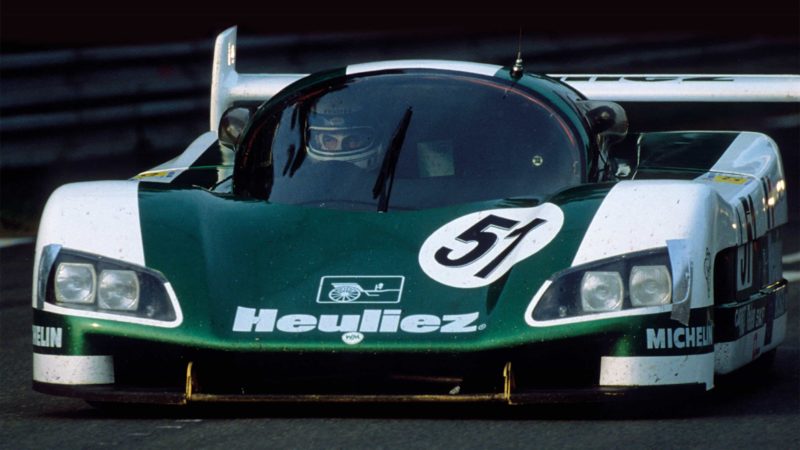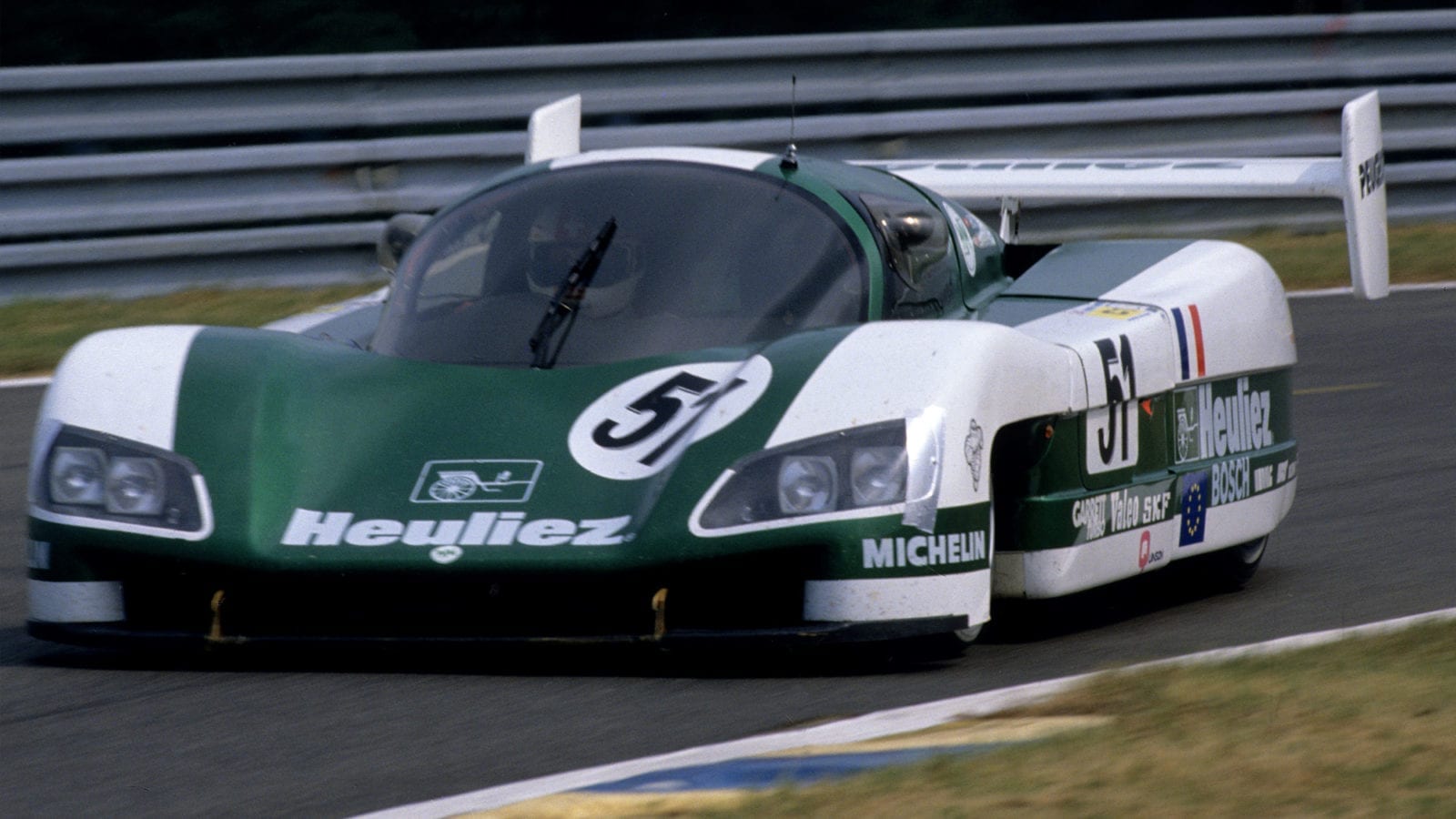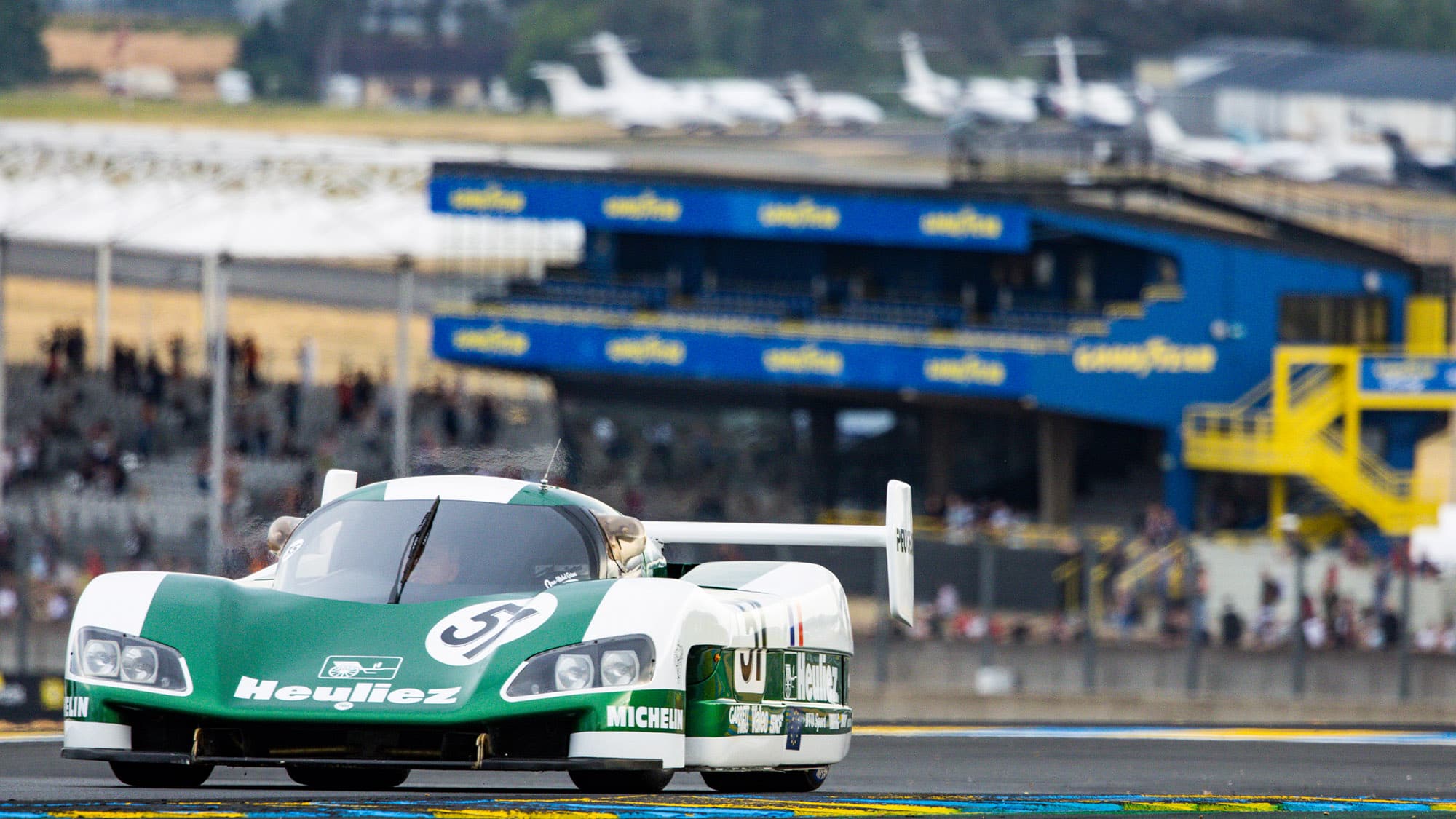“The car was made for top speed and nothing else,” recalls Thierry Boutsen of his Le Mans debut with WM back in 1981. “It was designed to be quickest down the straight”
Fellow Belgian Didier Theys, who raced for the team in 1982 and ‘83, has similar memories: “They would keep trimming the car for straight-line speed, but that left us with no downforce. The car was terrible everywhere else, particularly through the Porsche Curves. Sure, the car was fast on the Mulsanne, but the lap times were terrible.”
Boutsen and Theys don’t have fond memories of their time at the wheel of the quirky Peugeot-engined WM coupes.
“They were scary to drive,” says Theys, “so unstable.”

The WM team and driver Roger Dorchy were the kings of Mulsanne speed, achieving 381kph in 1987 with the P87, then went one better a year later, officially declaring 405kph with this P88, but believe they went quicker
Boutsen remembers a car that required all his attention just to make it to the end of the Mulsanne unscathed: “The width of the road was just wide enough to keep the thing under control. I used to zigzag all the way down the straight. If I wanted to pass another car I had to anticipate this movement”
Boutsen doesn’t blame this instability for the accident which ended his race and resulted in the death of a marshal. Rear suspension failure is believed to have caused the crash that sent his WM pinballing between the Mulsanne barriers for half a mile.


